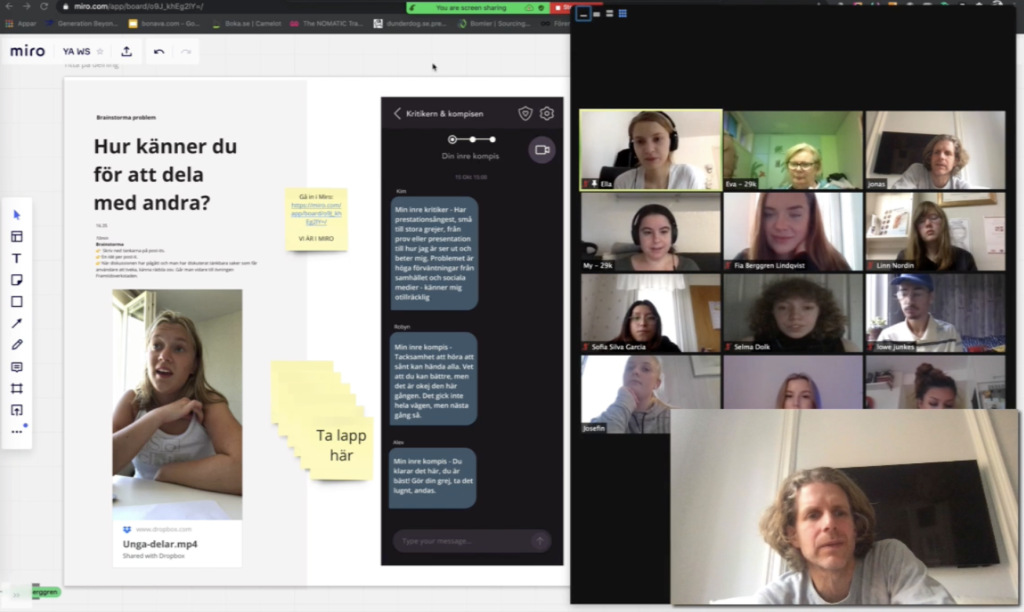
Rapid Collab is a fast-paced, collaborative ideation and design method. Conducted over five intensive days, it focuses on transforming participants’ ideas into concrete, tested concepts. Our workshops are often run digitally using Miro, enabling seamless, anonymous co-creation. This method has been successfully applied in diverse settings, including with kids for 29k.org.
Why This Approach Works
Why This Approach Works
By blending structured testing, diverse participation, and in-depth analysis, Rapid Collab ensures user-centric and data-driven outcomes. This iterative process creates solutions that resonate with target audiences, fostering deeper engagement and satisfaction.
The Process

The Process
Day 1: Setting the Foundation
- Objective: Define the challenge and align on goals.
- Define the principal stakeholders.
- Sketch the customer journeys for these stakeholders.
Day 2: Ideation
- Inspire: Gather and share ideas through simple sketches, referencing good external solutions.
- Crazy 8s: Brainstorm areas of interest and sketch proposals collaboratively or independently.
- Present and Refine: Share ideas with the group, refine based on feedback, and prepare detailed iterations.
Day 3: Prioritization
- Decide: Determine which ideas or components best align with Day 1’s goals.
- Pin the Ideas: Use a board to organize ideas with catchy headings and visuals.
- Feedback:
- Like: Highlight the most promising aspects.
- Risk: Identify and discuss risky elements.
Day 4: Prototyping
- Development: Create prototypes based on refined ideas from the earlier days.
- Choose fidelity: Paper sketches, wireframes, or digital designs.
- Make prototypes clickable.
- Define scenarios for testing.
Day 5: Testing
- User Testing: Engage target groups to interact with the prototype.
- Select respondents from diverse demographics.
- Conduct recorded interviews with at least three participants per group.
- Facilitate user-friendly tests with clear tasks.
- Analysis:
- Debrief respondents and gather quotes.
- Compile a top-line report with insights, supported by user quotes and demo footage.
Why?
The process is designed to foster innovative, user-aligned solutions while promoting collaboration and iterative improvement.
Key Steps in Testing:
- Choose and brief respondents.
- Introduce the prototype with a welcoming tone.
- Guide respondents through clear tasks.
- Record feedback and interactions.
Post-Test:
Present results and demonstrate the prototype.
Select key quotes and moments to illustrate findings.
Ready to collaborate or have questions about Rapid Collab? Reach out today to discuss how this method can work for your organization.
